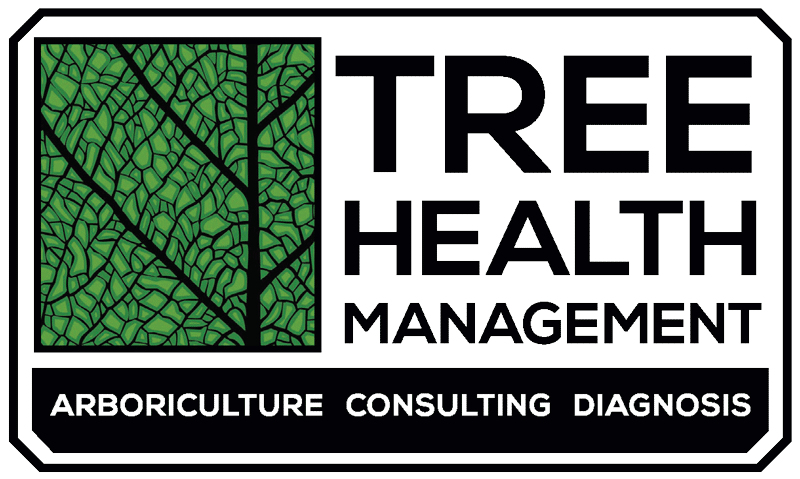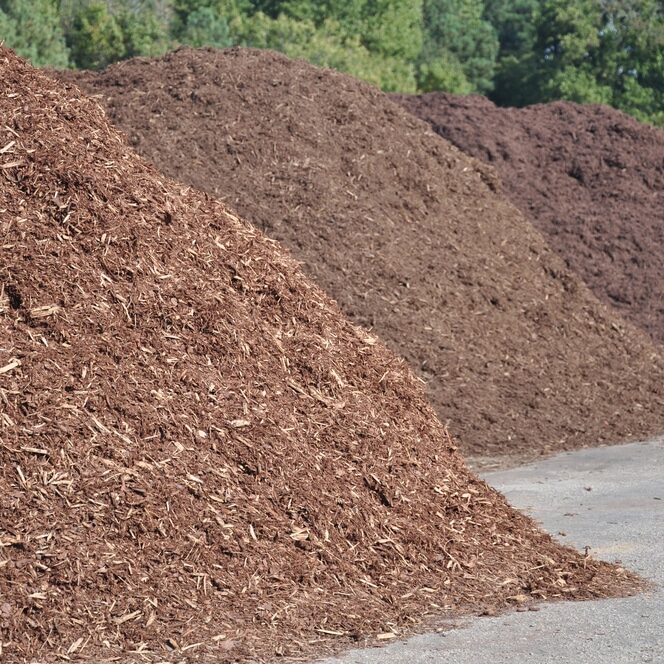Mulching is a great practice for landscape trees large and small alike. Since most of our urban trees have evolved in conditions where their leaf litter is left in place, it makes sense that much of the conditions urban trees grow in are less than ideal. Arborists often get questions from customers asking “Is there anything more I can do?” An easy answer is yes, mulch! But there are some rules to follow when mulching around your trees.
Benefits of Mulching
Mulching is beneficial in three main ways: it helps regulate temperature on the soil surface, helps trees retain moisture, and improves soil quality passively over time. Very hot, dry summers like the one we experienced last year can be stressful to trees that do not have covered soil. Heat and drought causes soil to shrink and pore space between soil particles to tighten. Pore space between soil particles is where plant-available water is held. The hotter and drier the weather gets the harder it is for water to penetrate the soil surface and make its way to roots. Additionally, exposed soil has no buffer from heat and roots can die from heat stress and dry conditions. The same is true for extreme cold when the soil surface is left uncovered. Believe it or not, snow insulates the soil surface from freezing temps, and a cold, dry winter without snow causes roots to freeze and die off. Mulching well before snowfall can help protect roots when we experience winters with low snow accumulations and very low temperatures. It’s important to know that lawn is not a meaningful source of soil cover, and comes with the added obstacle of root competition between your tree and the grass.
Mixing mulch into the soil is not advisable since the breakdown process steals oxygen and nitrogen from the surrounding soil. However, anyone who has had to replenish their garden mulch knows that nature has the breakdown process covered. (No, it’s not blowing away!) Mulch will be broken down over time and microscopic organic matter will be added and incorporated into the soil profile. This is one of the best ways to improve your soil over time. Just a few years of mulching can change the quality of your garden soil completely.
“Green” vs “Aged” mulch
Most mulch is comprised of wood chips, shreds or some combo of the two. It can be “green”, meaning that it came straight from the tree of origin to your garden without time to break down, or it can be aged. The difference between the two is that green mulch has more water and will shrink as it breaks down and aged mulch is drier and will not lose volume in the way green mulch does.
Leaves as Mulch
Leaves that are free of pathogens from a healthy tree is excellent mulch, and is a natural way for trees to recycle any extra nutrients not extracted before leaf drop. Raking leaves into your garden beds as they fall is a wonderful practice. And if there’s just too many, you can create a “leaf mould” pile, where leaves are left to rot naturally to be incorporated into planting beds later when they take up less space.
Proper Mulching
One of the biggest dysfunctions when it comes to mulching occurs when mulch is piled over the base of the tree and buries the root flare. The root flare is just what it sounds like, -it’s the area where the trunk of the tree base widens as it makes the transition to roots. This area should never be covered with anything, whether it’s mulch, soil or stones. The root flare should be visible on a healthy tree and should be carefully uncovered if it is not visible. Mulch that is piled too high is called a “mulch volcano” in the green industry. A mulch volcano holds moisture at the trunk which can result in wood rot and encourages root growth in inappropriate places along the trunk and root flare. The resulting roots often end up growing very fast and girdling the tree base in very little time.
If you have questions about mulching, our certified arborists are happy to help you. Contact Tree Health Management and we’ll do this together, we owe so much to our trees!

